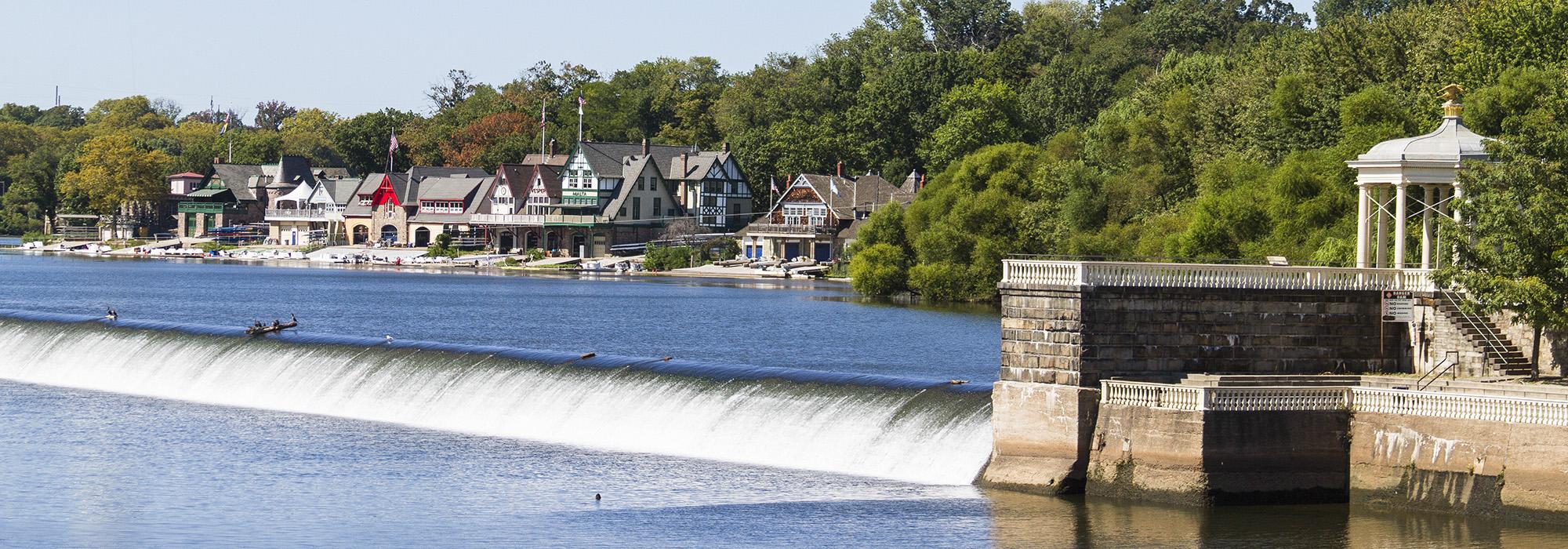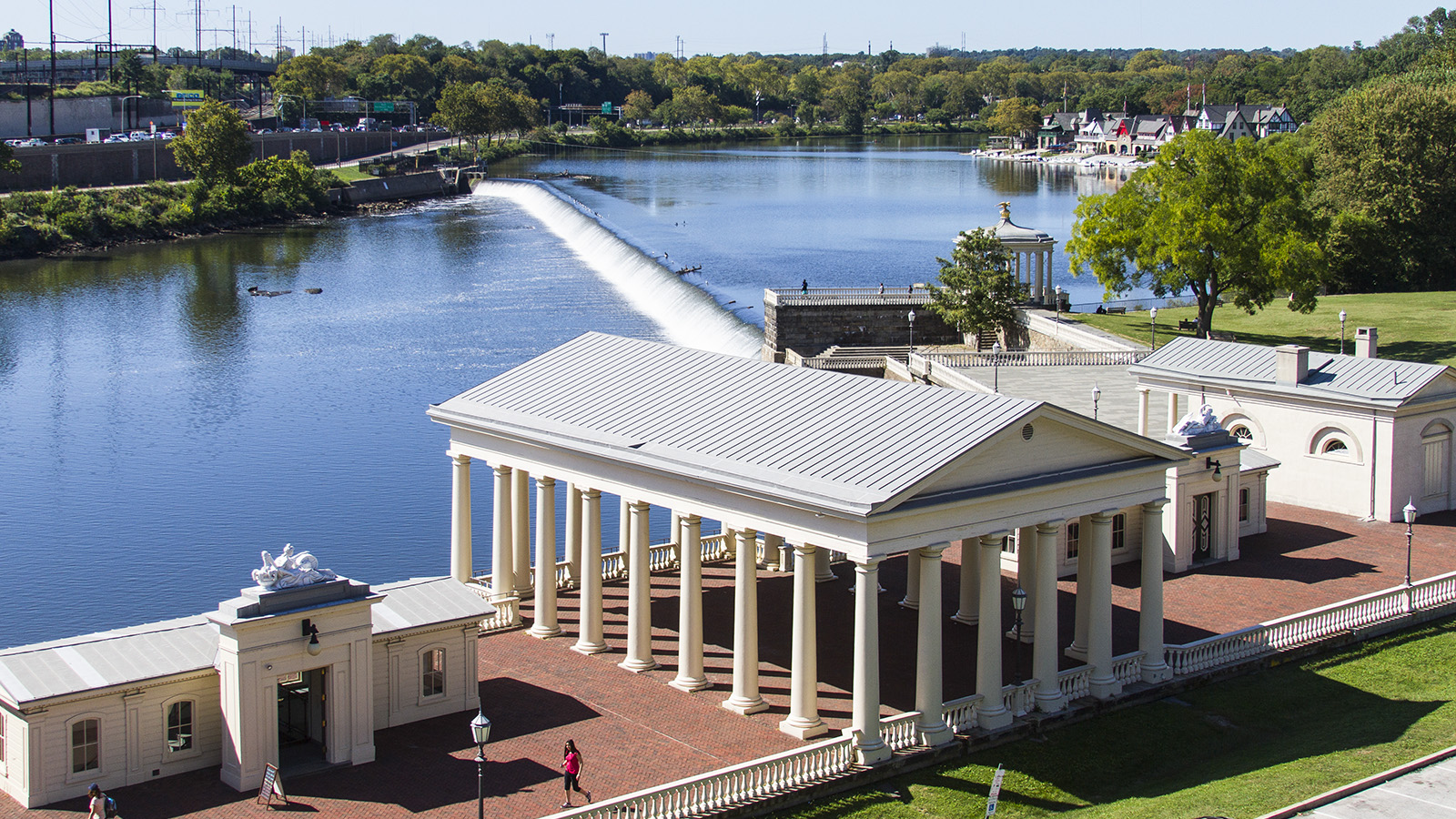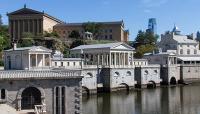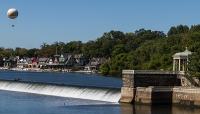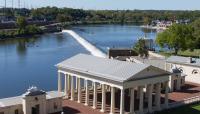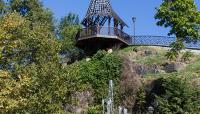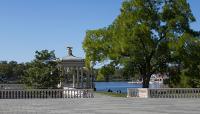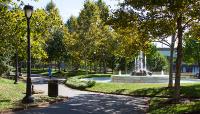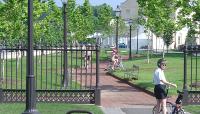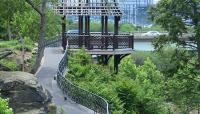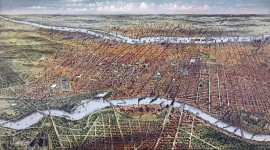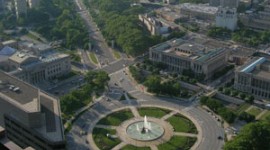Landscape Information
Comprising the cliffside, an esplanade, a formal garden, and Palladian structures designed to house Philadelphia’s water-pumping apparatus, this 20-acre parcel on the east side of the Schuylkill River served as the nucleus for the larger Fairmount Park. Responding to yellow fever epidemics, city officials selected the site for its elevation (some 50 feet above Philadelphia’s highest point) and proximity to clean water. In 1811, engineer Frederick Graff designed the structures and pumping mechanisms (constructed in 1814). Quarries were transformed into reservoirs and a dam and forebay were completed in 1821. By 1822, the coal-powered pumps were replaced by waterwheels and, in 1825, adjacent gardens (dubbed the South Garden a year later) were opened to the public. Designed by Graff, the gardens, which featured pavilions, fountains, brick and wooden walkways, parterre plantings, and mature trees, also included allegorical sculpture by William Rush. In the 1830s, an esplanade along the river was enhanced with a balustrade and the South Garden was enlarged. Graff died in 1847, but his work was continued by his son, Frederic Graff, Jr., who designed an Italianate standpipe in 1852 and an observation platform and “distribution arch” in 1860 (all demolished in the 1920s).
Land for the surrounding Fairmount Park was purchased in the 1850s and the pumping station functioned until it was decommissioned in 1909. Beginning in 1911, the buildings were utilized for the Philadelphia Aquarium; the reservoirs were reclaimed in the 1920s and the Philadelphia Museum of Art was built. In 1957, Thomas Sears developed a planting plan for the grounds and the South Garden, some of which was installed. In 1974, the Junior League commenced a campaign to revitalize the Water Works and its surrounds. Landscape architect William Menke rejuvenated the South Garden and esplanade, upgraded trails, and refreshed plantings throughout the site. Since 2003, the property has served as an interpretive center. In 1976, the Water Works was listed in the National Register of Historic Places and designated a National Historic Landmark.



